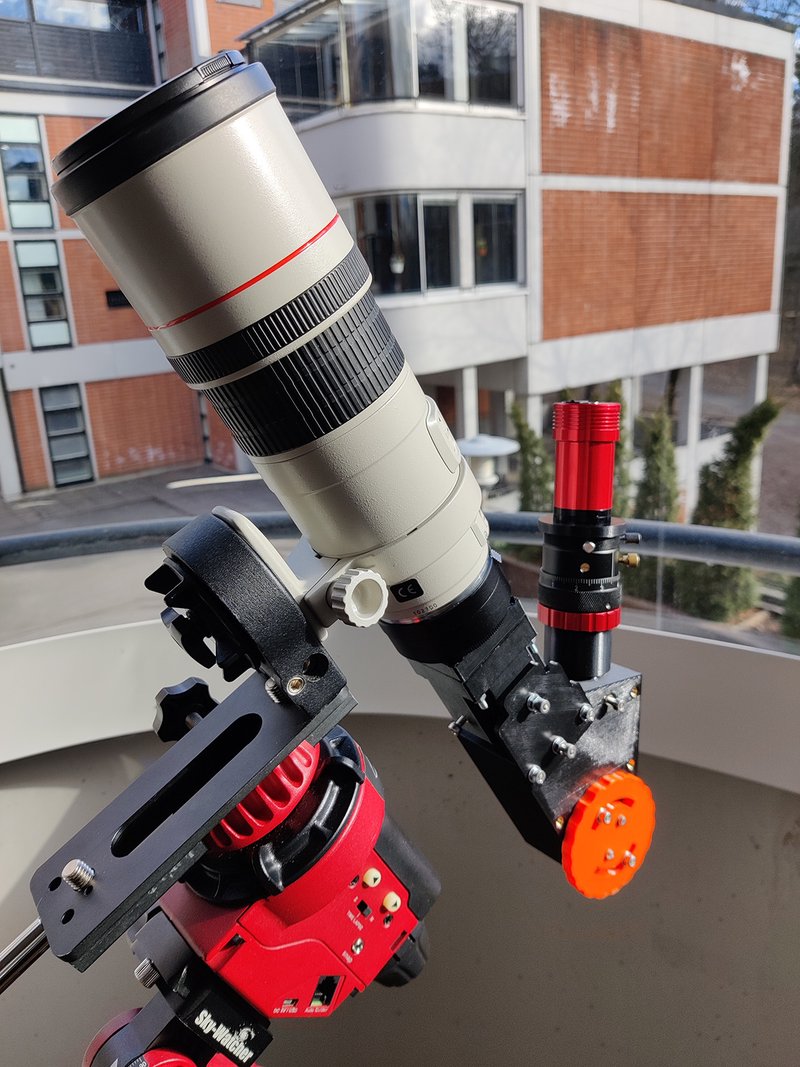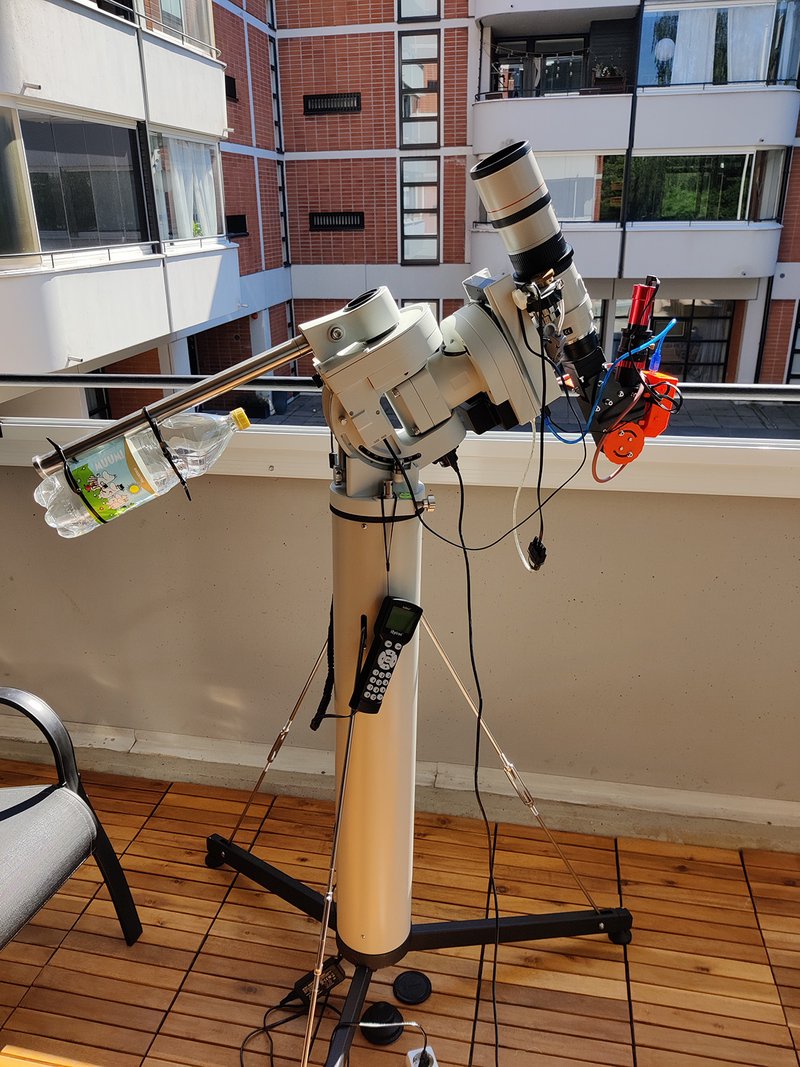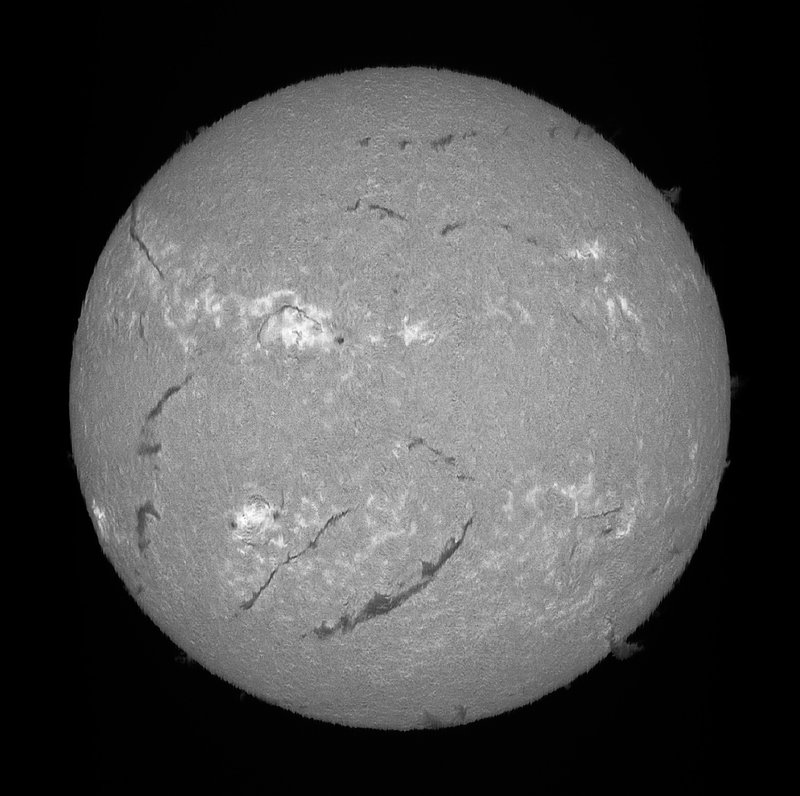Sol’Ex - DIY solar imaging
For the past months I have been obsessing over solar astronomy, and specifically a device called Sol’Ex or Solar Explorer. It is a spectroheliograph, which allows capturing the spectrum of a very thin slice of the sun’s disk. By capturing many images while scanning over the sun’s disk with the device, you can reconstruct an image of the whole sun at any visible wavelength you want. There is a catch, though. To be able to resolve the very thin absorption lines in the solar spectrum, very strong dispersion must be used, which means that a camera sensor can fit only a few nanometers of the solar spectrum at a time.
In any case, this is a very viable alternative to expensive dedicated etalon filters typically used in solar narrowband imaging. It is fairly cheap to manufacture, and it gives a lot of flexibility by capturing spectral data and letting you adjust the wavelength you want to capture.
The Sol’Ex website provides models ready for 3D printing your own copy of the Solar Explorer, and Shelyak Instruments sells a kit with all the necessary optical parts. As soon as I saw the project, I knew I had to get cracking. I printed out all the necessary parts, ordered the optics and started looking for the necessary mechnical bits that couldn’t be printed so easily.
Eventually I cobbled the whole thing together with a Canon EF 300/4L IS USM lens which I bought second-hand to shoot the 2017 total solar eclipse, a Hoya ND16 filter, and a ZWO ASI290MM Mini camera which I typically use for autoguiding with my astrophotography gear. During Finnish summer time the nights are too light for astrophotography, so I repurposed the camera for a few months.

At first I planted it on my flimsy Star Adventurer mount. It worked decently, but adjusting the focus or the scanning rate required touching the mount, which made it wobble quite a bit. Eventually I switched to my iOptron CEM60 mount, which is also waiting for darker autumn nights. The mount is more sturdy than a Star Adventurer and allows computer control.
I hacked together computer control for the camera lens focus too by adapting mine and Jari Saukkonen’s Arduino focuser for a normal Arduino Uno and an Elecrow motor shield, and using it to control a stepper motor that turns the focus ring on the camera lens. I printed a small enclosure for the Arduino so I can keep it mounted on the Sol’Ex. By having computer control for the focus, I don’t have to physically touch the gear at all during imaging, keeping wobble to a minimum.

My balcony is not an optimal place for solar imaging, as all the concrete and brick structures nearby cause atmospheric turbulence when they heat up in the sun, but you have to make do with what you have. I drive the whole thing with a Thinkpad X240 running Kubuntu. I use Firecapture to control the camera, and EKOS/INDI to drive the mount and focuser. The system works fairly well, especially for H-alpha (656 nm) imaging! I have been experimenting with Calcium K (394 nm) imaging too, but either the atmospheric seeing conditions in near ultraviolet are just really bad where I am, or the Canon camera lens is not that great in UV light. I always seem to get very blurry results despite doing my best focusing both the camera lens and the objective lens inside Sol’Ex.

There are many other absorption lines to explore in the solar spectrum in addition to H-a and Ca-K, but I have not gotten that far yet. There are many cool phenomena a spectroheliograph lets you study, like:
- The Doppler effect where the wavelength of light changes depending on the solar plasma’s relative motion to the observer
- The Zeeman effect where some absorption lines split in the presence of strong magnetic fields of the sun
- The E Corona which is an emissive part of the solar corona, glowing faintly at the wavelength of 530 nm
Because I like reinventing the wheel and I was not entirely happy with the software tools available for processing the scan videos produced by Sol’Ex, I developed my own Python tool Helios for processing raw SER video files captured with Sol’Ex. It is still a work in progress, but does all the necessary basic things like corrects for different geometric distortions introduced by the capture process, corrects for an imperfect slit in the spectroheliograph and is able to batch process many files at once. It is also fairly performant! On my desktop computer it ingests and processes 600 MB raw video files in roughly 1 second per file.
I am hoping to expand the tool to produce more neat visualizations of the data, and hopefully package it in a way that it is easy to use for people who are not familiar with Python.